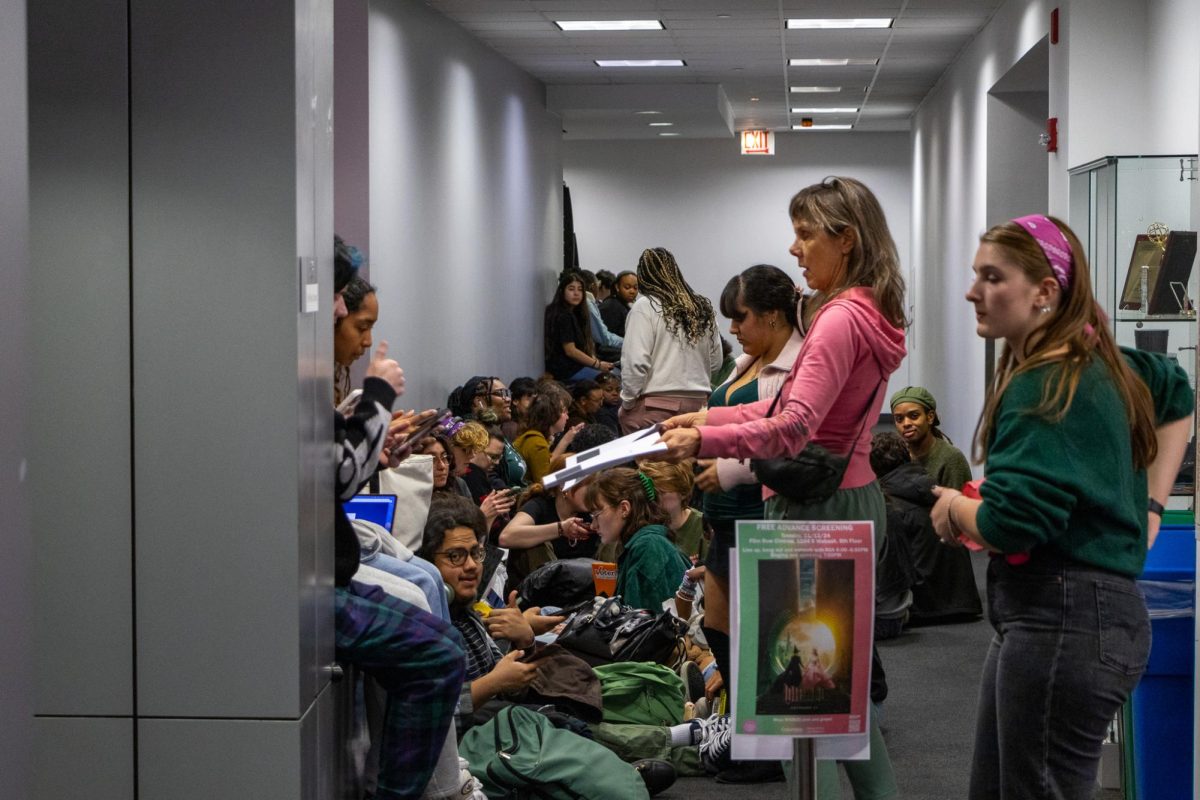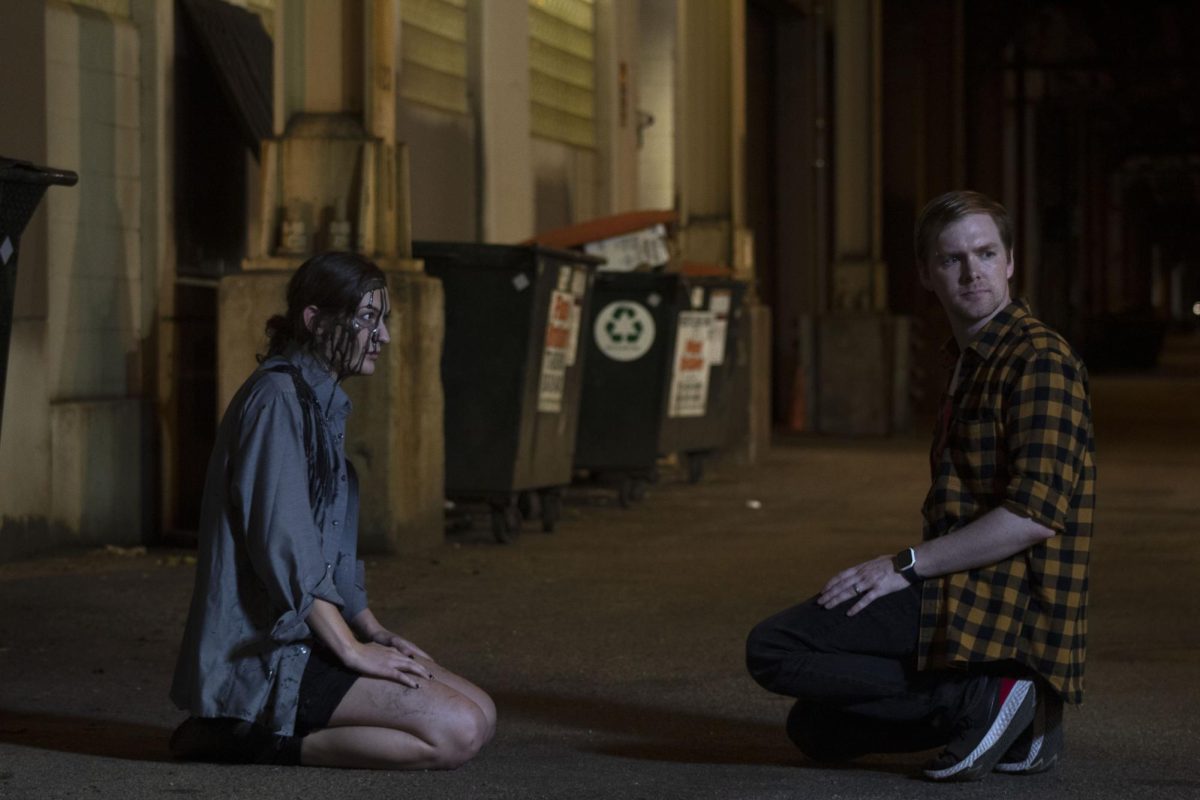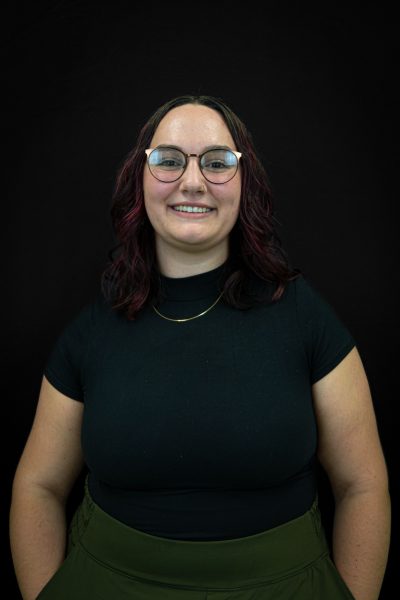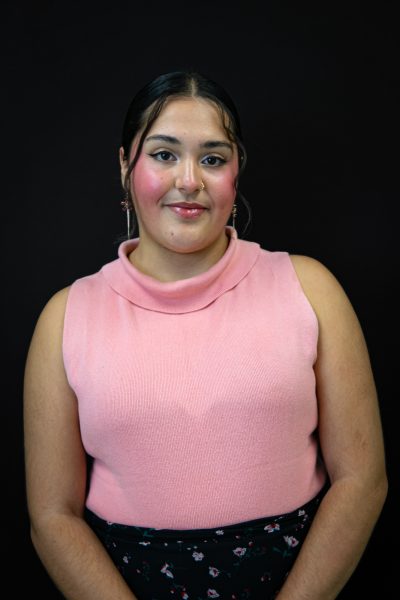On Wednesday, Nov. 13, Dawit L. Petros did a lecture in photography at Columbia’s Museum of Contemporary Photography to give further insight into this exhibition and his artistic process. This event was originally supposed to take place in October, but Petros was ill, so it had to be postponed.
Petros, a visual artist and researcher, explores the connection between past and present in his newest exhibit, Prospetto a Mare, that is currently being displayed at Columbia’s MoCP.
There were about 60 people that attended the event, which ran from 6 p.m. to 9 p.m. and included his lecture, an open Q&A and a reception in the gallery.
This exhibition is a continuation of his long-term exploration into the lasting influence of Italian colonialism on the “visual cultures, populations and built environments of Africa, Europe and North America.”
The display at MoCP features a deep dive into Chicago’s connections with various aspects of Italian colonialism and seeks to uncover the imperfect ways this history is embedded within the city.
Karen Irvine, chief curator and deputy director at the MoCP, has known Petros for many years and is a long-time fan of his work. Irvine said that they reconnected a couple of years ago around the same time that the Terra Foundation was forming a local initiative centered on the topic of migration, and she thought that this may be the perfect opportunity to work with him.
Irvine said the exhibition’s main point is to “probe histories and illustrate the fact that all of these historical narratives that people think are cemented, often aren’t.” Although Prospetto a Mare primarily focuses on the impact of Italian colonialism, Irvine says that “you could also extend this inquiry into any aspect of world history.”
She mentioned that Petros’ study is especially significant now, as “at this moment, where we’re seeing the right wing and facism rise in many places, including our own country, it’s really important to understand that there’s a long history of that kind of domination.”
“I hope that the students that come here not only learn about these specific histories and about Dawit’s practice, but also consider bigger questions,” Irvine said.
A wide variety of people came to participate in the lecture, including students and professors from at least four different colleges. There were also members of the Terra foundation and some of Petros’ colleagues. One attendee heard about this event through a group chat for Ethiopian and Eritreans in Chicago.
Alyssa McKenna, a first-year graduate student in photography at Columbia, works at MoCP and regularly gives tours of the exhibition. McKenna became more interested in Petros’ work after first learning about it for her job and has enjoyed having open conversations with guests about the meaning behind his art.
“Really, with each of these pieces, the little snippet doesn’t do justice,” she said. “You really kind of have to dive deep with it.” McKenna aims to give comprehensive tours that evaluate Petros’ process and inspirations in addition to discussing the literal work displayed.
She particularly appreciated the contextualization that Petros offered while lecturing. “I knew that he specifically excluded the Balbo Monument column in his work, but to hear him explain why. The fact that absence, and he has absence in a lot of his other works too, could be just as powerful, pronounced and prevalent as including specific things.”
Randall Honold has been visiting the MoCP for over twenty years, and recently taught a course at DePaul University titled “Photographing Chicago.” Honold was intrigued by the connection of Petros’ study to the city of Chicago. “I think the Chicago angle was especially meaningful, and something that I want to return to a little bit and read more about,” he said.
“I’m really interested in artists who incorporate photography into a larger program or a larger project, and this is something I knew almost nothing about,” Honold said, “so I came here to learn.”
Behailu Shiferaw Mihirete, a Northwestern doctorate rhetoric student, a Northwestern doctorate rhetoric student, said that he had been looking for “something like this.” He first saw the exhibit a couple weeks ago, and heard about this lecture via email.
“I am very interested in the visual and cultural legacies of the Italian conquest of Africa,” Mihirete said. “I really love the underlying conceptual engagements he has had with it, that’s what I really admired.”
Mihirete said that this exhibition was incredibly personal to him, as the subject matter is directly connected to parts of his country. “Some of the things that he was talking about in the presentation, they are reproduced on student textbooks and exercise books in Ethiopia,” he said.
Mihirete hopes that Petros’ work will encourage students to “engage with photos like they’ve never done before.”
“He showed how photography was complicit in the colonization of Africa and the dehumanization of Africa as a way of justifying their conquest of our countries,” he said. “But then he is inverting that and using the same tool to show what they have been through.”
Selena Kearney is taking one of Petros’ classes this semester at the School of the Art Institute of Chicago. She has come to view the exhibition several times and enjoys looking for a new story each visit.
Despite being one of his students, Kearney learned during the lecture that “Dawit’s process as an artist is rooted in a sense of research where he is asking specific questions to find the answers, and then the visual forms come out of that.”
Eritrean researcher and artist Tehan Ketema was eager to meet Petros and learn about his study. “I think there’s a real interrogation as an audience member that I have to do looking at this work that I appreciate,” she said.
Timnet Gedar, a historian who was on the advisory board for this exhibit said that one thing that she found interesting was Petros’ approach to his role as an artist, and how it’s not to “fill in the gaps.”
“My job is to fill in gaps,” she said. “It made me think about how we can pose more questions rather than just give answers to people, so like promoting more thought in discussion.”
The exhibition will be displayed in the MoCP until Dec. 20, 2024.
Copy edited by Trinity Balboa










